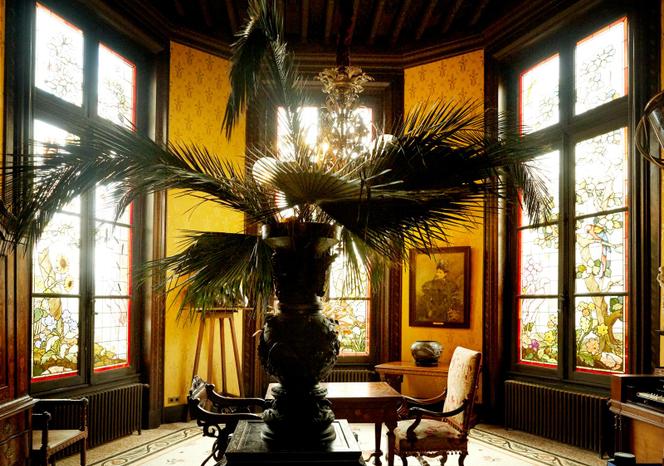


Emile Zola's life in Médan, in the Paris region, is often perceived too seriously. His life was imagined to be filled with discussions among naturalist writers – Maupassant, Huysmans, Henry Céard, Léon Hennique and Paul Alexis – with Zola, the author of Germinal, as the leading figure. The fault lies in the short story collection Les Soirées de Médan ("Evenings at Médan"), through which the six writers laid the foundations in 1880 for a literature guided by observation and experimentation. Apart from the fact that this volume was written in Paris, its title is a simple nod to the good times spent in Médan. "People came here mainly to eat well, drink well, row or cycle, lie in the grass, and count trains," said Philippe Oriol, director of the Maison Zola-Musée Dreyfus, pointing to the railroad line that still passes below the garden. After 10 years of renovation, where the house was refurnished identically, the Maison Zola opened in the fall of 2021.
The huge success of L'Assommoir (The Dram Shop, 1877) enabled Zola to buy a house in Médan. "He was living in Paris, near the Saint-Lazare train station, but he could no longer stand the noise of the capital which was in the midst of major construction work in preparation for the 1878 World's Fair and the ongoing Haussmann building project," said Oriol. In the summer of 1878, he fell in love with a square, two-story building. "I bought a house, a rabbit hutch, between Poissy and Triel, in a charming hole on the banks of the Seine, 9,000 francs, I'll tell you the price so you don't have too much deference. Literature has paid for this modest country retreat," he wrote to Gustave Flaubert in August 1878.

Located 30 kilometers from Paris, where he continues to spend his winters, it was once a peasant home surrounded by a 1,600-square-meter garden. Thanks to his comfortable royalties, Zola gradually acquired neighboring plots of land, eventually creating a vast park of over four hectares. He embarked on a major project that would give the house its current appearance. On either side of the "rabbit hutch" stand two towers. The first one, square, was erected in 1878-1879 and called the "Nana tower," while the other, hexagonal, was built in 1885-1886 and named the "Germinal tower."
To the left of the house, he had a red-brick pavilion built to accommodate his publisher Georges Charpentier, his Impressionist friends Cézanne, Manet and Pissarro, whose work he fervently championed as an art critic, and Edmond de Goncourt. The property includes a farm, which, along with the orchard and vegetable garden, enabled the writer to live virtually self-sufficiently during his long stays in Médan. Zola partly drew inspiration from village life, which at the time had a population of only 198, to write La Terre (The Earth, 1887), a controversial novel that highlighted the brutality of rural ways.
You have 57.53% of this article left to read. The rest is for subscribers only.
